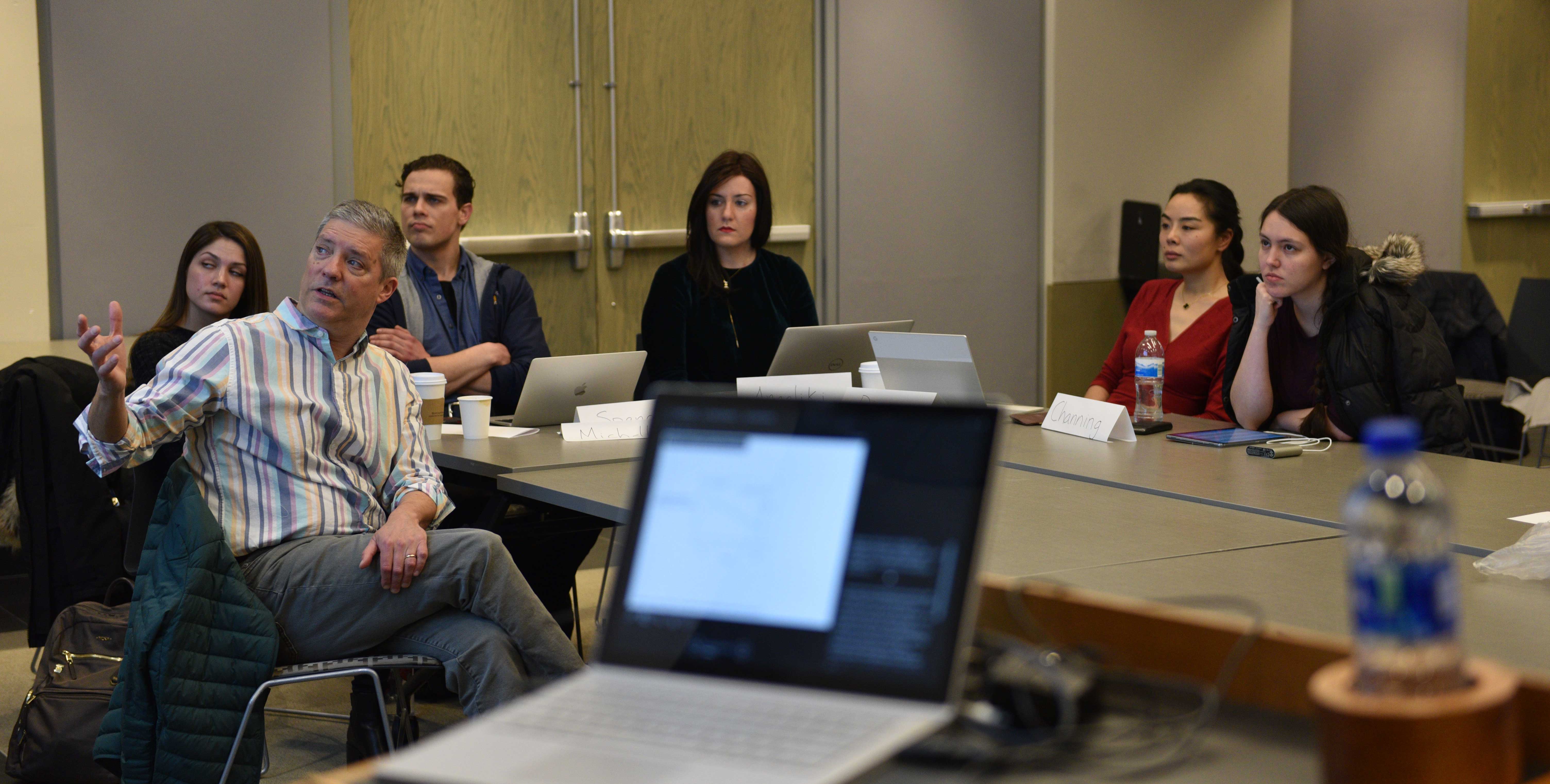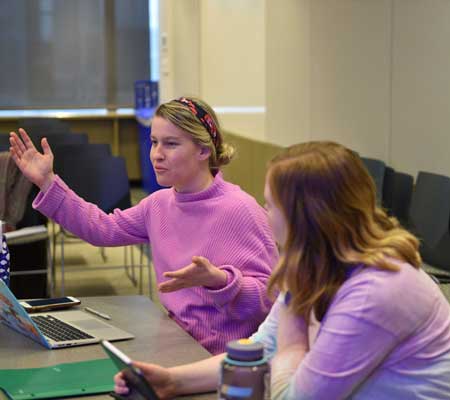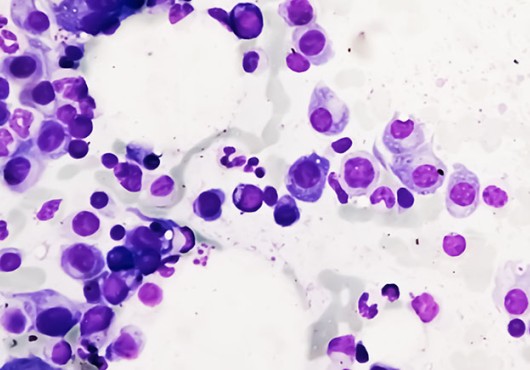
The students gather high above the Harvard Medical School campus in a tenth-floor New Research Building classroom, the reflective blue glass of the high-rise next door providing a bright backdrop to their serious discussions around what scientists should consider when research has the potential to hurt people.
“In addition to a long history in which science has benefited people, there are also theories and aspects of science that are used to harm,” said course director Jonathan Beckwith, the American Cancer Society Professor of Microbiology and Immunobiology, Emeritus, at Harvard Medical School.
“Science students should be aware of this and, particularly, recognize that science is not necessarily objective,” said Beckwith. “Most problematic instances often occur when a scientist’s biases influence his or her theories.”
“I think it’s important to at least have thought about some of these things,” said Michelle Boisvert, a PhD candidate in biological and biomedical sciences who is enrolled in the class. “When you’re doing experiments with other scientists in the future and thinking of what their ethics are and what yours are.”
Genetics and eugenics
This spring, Beckwith and Kayla Davis, an HMS PhD candidate in biological and biomedical sciences in the Schwarz Lab, are facilitating a weekly, three-hour discussion course designed to get students thinking. More than three decades after it first began, the Social Issues in Biology course is offered as a graduate elective course (Microbiology 213) in which students can explore issues such as eugenics or sterilization, reproducibility, or sexism in science.
“I hope that students develop a more critical eye for the motivations and social implications of the science they do, and that they see happening around them; and also that they become more comfortable publicly questioning science on merits of ethics,” said Davis.
“I also hope students will become more aware of their own biases and learn from the examples we use in class on how to be better advocates and allies for themselves, their colleagues, and groups that have been historically marginalized in science and by science,” she added.
In January, Beckwith began the 2020 course with a discussion about genetics, providing a historical primer on the eugenics movement in the late 19th and early 20th centuries—a movement that promoted the idea that the human species could be improved by selectively breeding out undesirable diseases or disabilities.
“People believed that genetics really explained social problems,” Beckwith told the class. “If you know the history of that time, geneticists were excited about working with anything—including people,” he added. “There were a few scientists who began to oppose the eugenics movement.”
One of them, Beckwith said, was Thomas Hunt Morgan, who won the Nobel Prize in Physiology or Medicine in 1933 for discoveries elucidating the role that chromosomes play in heredity.
In 1915, Morgan became disgusted with the role of scientists who supported the eugenics movement which was destructive to many people in the United States, Beckwith said, adding that it was unusual for a scientist such as Morgan to criticize other scientists for such activity.
Nevertheless, Morgan never communicated to the public the misuse and misrepresentation of genetics to support eugenics, thus affecting thousands of people, he said.
But taking a critical look at science is exactly what Beckwith and Davis now invite the students to do by examining articles such as “Engineering American Society,” published in Nature Reviews in 2000, which drew parallels between the eugenics movement of the 20th century and what is happening in the 21st century because of advances in human genomics.

“We stand at the threshold of a new century, with the whole human genome stretched out before us,” wrote the authors David Micklos and Elof Carlson. “Messages from science, the popular media and the stock market suggest a world of seemingly limitless opportunities to improve human health and productivity. But at the turn of the last century, science and society faced a similar rush to exploit human genetics. The story of eugenics—humankind’s first venture into a ‘gene age’—holds a cautionary lesson for our current preoccupation with genes.”
Initial class discussions centered around the language scientists use in their published papers and the effects their research can have on the broader public when the lay press oversimplifies it, or groups with specific agendas, such as white supremacists, decide to use genetic research to advance their own arguments.
The readings provoke thoughtful discussions among the students, with one asking about a published paper, “Did the scientists ever actually use the word ‘race’ in the paper?” and another questioning, “Are there scientists of color who are leading these types of studies, or is it always white scientists?”
One student ventured to say that fringe groups often lack credibility and probably lack the ability to accurately evaluate scientific papers.
“White supremacists have never really been a beacon of scientific truth,” the student said, to which Beckwith countered that often such groups actually do “dig deep into genetics,” for a fairly keen understanding of the science. At which point another student asked, “Can scientists protect against these broad misrepresentations [of their research] with disclaimers?” And a third student asked how scientists can avoid having their research weaponized by those who might seek to promote misconceptions about their objective results.
For Maeve McNamara, a visiting postgraduate research fellow in the lab of HMS Professor of Genetics David Sinclair, who studies the biology of aging, the course is helping to place research in a broader context. McNamara said she hopes the course will prepare her to be a better scientist at a time when technology is quickly outpacing society’s ability to adequately parse the impact and consequences of new discoveries.
“I think it’s important to be armed with the answers to the kinds of questions we’re grappling with,” McNamara said. “As scientists … we have to be conscious of our own implicit biases at the smallest levels.”
Can we trust ourselves?
In the course’s second lecture, delivered by HMS Professor of Microbiology Stephen Lory, the class took a longer, in-depth look at the history of eugenics, dating from the time of Plato through Thomas Malthus, Herbert Spencer and Charles Darwin.
After tracing the rise of the eugenics movement in the U.S. and Nazi Germany, Lory discussed practices that continue today, citing prenatal screening tests in Iceland that have resulted in a significant reduction in Down syndrome births.
Lory queried the students: What did they think of efforts to develop the ability to eliminate diseases such as cystic fibrosis, epilepsy or Huntington’s disease from the human population? What are their thoughts about dating sites that promise to pair couples based on similar IQs or fertility clinics that offer prenatal genetic diagnoses? What of society’s interest in eliminating certain defective genes?
“I think sometimes the intention is to do good… to make humans better,” offered one student, “but we really can’t trust ourselves.”
“What bothers me is that… my genetic information will be out there,” said another student, wondering, “Who says this information will not be used for other purposes than what is intended?”
More discussion followed about a wrongful life legal suit brought during the 1980s in California by the parents of a child born with Tay-Sachs disease who died at a young age. After the child’s death, the parents sued the laboratory that had performed a blood test on the mother, saying they never would have conceived had they known the risks.
From there, class conversation flowed to the one-child rule in China that has resulted in a surfeit of male births and then to what alternatives parents should be allowed to consider if they know in advance their offspring might be born with a fatal disease.
When the topic veered to genetic selection, a few students talked about how couples have always, in a sense, chosen mates for what they perceive as positive breeding traits—intelligence, height or other “vanity traits,” as Lory called them.
“My question is, is eugenics inherently wrong if it’s not coerced?” one student asked.
What if CRISPR therapies have the potential to violate the rights of someone who hasn’t been born yet? Lory asked. And what about the financial benefits that can be derived by companies developing gene therapies, Davis asked. Is it right to be interfering with gene pools, possibly adversely affecting human diversity? Does it make sense for only the wealthy to be able to afford such therapies? And how does a government balance the rights of individuals against the welfare of the state?
“It brings up a lot of questions about who should be making these decisions,” said Davis, asking the students, “Do you think these are the kinds of decisions parents should be making?”
Probability, statistics and ‘truth’ in science
By the third week, class discussion turned to questions surrounding how scientists should think ethically about data, with a talk led by Richard Born, professor of neurobiology at HMS. He began by raising the issue of p-hacking, a practice where scientists continue to collect or select data or statistics until they achieve the results they’ve been seeking and find the elusive p-value that renders a result that can be considered statistically significant.
“In p-hacking, you’re manufacturing significance,” said Born. “You’re cheating.”
The group examined a case where problematic results followed from a drug trial, and they explored the reasons why the trial may have gone awry, ranging from bad experimental design to changes in the trial populations.
Born introduced the topic of p-hacking and questioned whether a significant part of the problem involved with the practice is an incentive structure in science that pressures researchers to get positive results.
“Some say we should change the incentive structure. How would you do that differently?” Born asked the class.
Although there were no ready solutions, it was clear from students’ questions that they are aware of the implications.
“It teaches us to be humble in the face of the truth, or at least in our ability to know the truth. The truth is not always as obvious as we’d like it to be.” — Rick Born
“There are lives at stake, if [faulty results are] going to clinical trials; we should be taking it a lot more seriously,” said one student.
Science is inherently self-correcting, said Born, because bad experiments or results are almost always eventually revealed. But the students agreed that there’s a risk of greater damage done by practices such as p-hacking when it causes science to lose credibility with the public because of questionable experiments or results.
“If we can’t trust science,” one student said, “we’ll end up questioning everything.” Which, she acknowledged, is a perilous situation to be in when a significant amount of funding for scientific research comes from public tax dollars.
“We know that statistics are a powerful tool for distilling data into knowledge,” said Born, who suggested that perhaps all study results should be recorded publicly, not just those that achieve significant results. In the end, he said, it’s important that young scientists have a greater awareness of these issues and the possible consequences.
“It teaches us to be humble in the face of the truth, or at least in our ability to know the truth,” Born told the class. “The truth is not always as obvious as we’d like it to be.”
It can be, however, a hard truth, said one class participant, when laboratories and scientists are dependent on earning five-year-cycle grants to receive the funding they need to continue their work, and researchers feel pressured to deliver results. The problem can be compounded, she added, when biologists lack a firm grounding in statistics.
“Some may not even know when they’re doing something wrong,” she said.
Long range impact
The thought-provoking class has a long history. In the 1960s, Beckwith began teaching a graduate elective course in microbial genetics, occasionally adding components that covered social issues in biology. At the time, many factors influenced the students’ desire to put the science into a broader context, he said, such as Vietnam War protests, the battles for civil rights in the U.S., and protests spawned by the burgeoning women’s movement.
Then, in 1983, Beckwith said, two graduate students asked him if he would teach a full-length class on the societal effects of science, to which he agreed. Course topics touched on science and warfare, such as the development and use of the atomic bomb, or the intersection of race and medicine, with discussions pegged to the book The Immortal Life of Henrietta Lacks.
In 2013, course topics touched on inherited disease, forced sterilization and genetic engineering, with the issues combined into a play called “The Edge of the Map,” which was performed at Harvard’s Science Center, Beckwith said.
Today, nearly 40 years after it began—with even more rapid advances in biotechnology, including gene editing, the use of DNA to apprehend criminals, or the necessity of vaccinations—the course is as relevant as ever.
“Young scientists should learn how to clearly explain subjects that may be about general issues that are of broad concern, such as climate change,” said Beckwith.
Over the years, students who have taken the course have kept in contact with Beckwith, he said, mentioning how they have pursued research evaluating the potential dangers of gene-drive research or published articles related to problems in the direct-to-consumer genetic-testing marketplace.
The current 12-week course will cover a number of controversial topics before it concludes in the spring, including the use of science in warfare, sexism in science, inclusion of diverse voices and reproducibility in science as an ethical issue.
For the students, it’s enough to raise—and think about—many of these very important issues.
“At the end of the day, what we’re trying to learn here isn’t what the answers are. It’s about becoming more aware that there are multiple answers, and we must approach the questions carefully,” said John Mikhael, an MD/PhD candidate in neuroscience.
“These are conversations we should be having all along the way,” offered McNamara. “Before we come up with the technology to do these things.”





